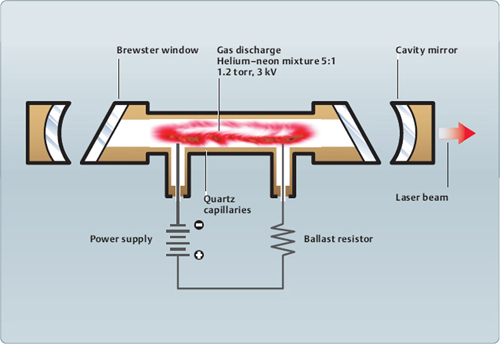(M. Wiesner-Zechmeister) Use of Low-Level Laser in Fractal Microsystems One of the greatest innovations of recent decades in acupuncture has been the use of laser. The acupuncture point or area to be stimulated is influenced by an electromagnetic impulse, the laser light. This gives the acupuncturist a “light needle” which makes it possible to find the indication for acupuncture significantly more often, for example, in children, and to considerably increase the treatment options open to the acupuncturist. At the same time, scientists began to take an interest in the phenomenon that makes it possible sto stimulate and influence biologically active points with a special light. The results of the various studies represent an enormous enrichment of research into acupuncture. The word “laser” is an acronym for “light amplification by stimulated emission of radiation.” Einsteindiscovered the laser principle shortly after the turn of the 20th century. However, it was not until the 1960’s that the first laser, a ruby laser, was manufactured. Shortly afterwards the first helium–neon laser was developed. This emits a red light with a wavelength of 632.8 nanometers. The Functional Principle of the Helium–Neon Laser A laser tube contains a mixture of helium and neon gas. A voltage is applied to this mixture, dispatching the electrons of the helium atoms on a higher-energy, metastable path. By colliding with the neon atoms, the electrons return to their original path. The energy arising in this way is released in the form of light quanta, so-called photons. The light is polarized between the cavity mirrors while one of the mirrors from which the laser beam emerges is semipermeable. The functional principle of the helium–neon laser The atomic model Properties Two key properties distinguish laser light from normal light, namely monochromasy and coherence. Monochromasy: Visible light is a small part of electromagnetic radiation, which also includes many other familiar kinds of radiation such as, for example, UV radiation or radio waves besides light. What we recognize as light consists of different colors of the spectrum ranging from violet to red. Visible wavelengths oscillate between approx. 350 and 700 nanometers. The range above 700 nanometers is known as the infrared range. Monochromatic laser light only comprises a single wavelength. The light which is emitted by a helium–neon tube is, for example, a pure red light with a single wavelength, in this case 632.8 nanometers. Coherence: Coherence means that there is a fixed phase relationship between all components of laser radiation—it is therefore an extremely highly ordered light. According to studies by Popp, the transparency of living tissues, which represent a very dense material for normal light, is significantly greater for coherent laser light. American scientists demonstrated that weak laser light is not, as expected, reflected on the surface of radiated plant roots but penetrates practically the whole root loss-free. The view today is that a continuous rather than a pulsed beam should be used. This ensures the continuous emission of electromagnetic stimulation. Frequencies like those achieved by “chopping up a laser beam” bear no relevance to treatment at present. In this regard, it has not been possible to verify the therapeutic effect of frequencies used by Bahr and Nogier to date. Depth of Penetration According to the Monte Carlo definition, the penetration depth of a beam is defined as the depth at which a third of the original beam is still evident. 1017 photons per second are released from a 10mW laser. With the lasers used in acupuncture, the penetration depth is 2–4 mm, so that at this depth approx. 3 × 1016 photons are still evident. Thereafter, sufficient photons are still available at a depth of several centimeters, ensuring biological induction. When the laser is used to stimulate the acupuncture zones of fractal microsystems, the depth of penetration plays a more subordinate role, as these zones are situated only a few millimeters under the skin. The view today is that the following are crucial for the special effect of laser light compared with normal light: monochromasy permits the application of a high power density of a quite specific wavelength at the acupuncture point in spite of the seemingly low output of the low-level laser in the milliwatt range. Coherence seems to be responsible for the significantly greater depth of penetration of laser light into the tissues compared with normal light, while electromagnetic induction of tissue radiation immediately under the skin is still being debated. How Does Laser Work in Acupuncture? The elementary processes which enable organic life in the first place occur at an atomic and subatomic level. These processes alone make it possible for organic structures to be formed and to interact. They form the basis of every biochemical process. The laws of quantum physics apply at this level and electromagnetism dominates as a major force. All organic structures are in permanent interaction and all organic structures emit coherent, electromagnetic waves. This electromagnetic radiation is the most elementary form of mutual exertion of influence and information transfer of biological systems. This passing on of electromagnetic information may be the explanation for the remote influence of acupuncture points and also explains why there is no anatomical substrate for the transfer of information. Electromagnetic waves are released with increased frequency at the synapses of nerves. As a result of interaction with other nerve fibers and their waves, oscillations may interfere and thus form interference patterns similar to holograms. From a biophysical perspective, these interference points correspond to acupuncture points which may contain information about the operation of large parts of the body. As biophysical coordinating points, these acupuncture points are naturally accessible to the exertion of influence from outside, whether they correspond to classical acupuncture points or fractal microsystems. The traditional means is mechanical irritation with a needle. Laser stimulation represents an additional, very elegant, direct, electromagnetic influence. The release of photons induced in this way at the acupuncture point may boost existing, weak radiation. The Practical Application of Laser In contrast to surgical lasers, which all operate in watts and are used as light scalpels, lasers which operate in milliwatts are used in acupuncture. They are performance class III, mainly performance class IIIb, and are therefore subject to radiation protection provisions. These lasers do not heat up the tissues at all and their sole purpose is biostimulation. In accordance with the current level of knowledge, lasers with an output of between 6 and 15 mW (the ratings always relate to 1 cm2) are usually used. With the exception of oral acupuncture, the tip of the laser is placed directly on the corresponding area and the duration of radiation is between 10 and 15 seconds. Lasers emitting a constant beam are used. Frequencies like those resulting from “chopping up” the constant beam are not used here. As many studies show, the biological, biochemical, and biophysical responses of the organism can above all be traced back to the wavelength of laser light used. The desired effects can be achieved in acupuncture by lasers emitting a light in the red light or in the adjacent infrared light range. For empirical and practical reasons, as well as on account of various studies, a red light laser is currently to be recommended. Particularly when used in various special forms of acupuncture, laser has a number of advantages. As the zones are located immediately below the skin, the laser can stimulate them without any difficulty. In patients who are very sensitive to pain or who would be loath to agree to needle acupuncture, such as children, for example, laser acupuncture can be carried out at any time as it is practically pain-free. A combination of laser acupuncture and needle acupuncture is quite possible. Although the areas used for various fractal microsystems are exactly defined, the zones to be treated in each case must be precisely located on an individual basis. These corresponding zones are characterized by increased sensitivity to pressure pain and by changes in the consistency of the underlying tissue compared with the surrounding area and frequently by changes in the surface as well. This results in the increased conductivity of the skin—the resistance of the skin is reduced. Measurement of skin resistance is integrated into many laser devices, providing valuable assistance in finding the respective zone for treatment. However, it should be pointed out that the measuring of skin resistance cannot in any way replace the testing of pressure pain and tissue consistency. Microsystems and System Theory Until now, there was no explanation for the existence of microsystems in anatomy. It was system theory, which sees the construction of organic structures in a completely different light and reinterprets the interaction of the organism with the environment, which provided the explanation for microsystems. System theory views an organism as a self-regulating, open system that is in permanent interaction with the environment, constantly absorbing information and energy from the environment, processing this, and passing it on again in another form. The organism is in a permanent equilibrium of flow, the physiological processes are irreversible, and their chief purpose is that of self-regulation. From the perspective of system theory, the structure of the organism is fractal. The fractal structure of nature is currently causing a sensational revolution throughout the entire scientific world. Fractal structures reflect the overall structure in every detail. They are found throughout nature—man has a fractal structure, too. Many anatomical structures such as the lung, the kidney, or the intestine have been recognized as fractal, i.e., they have a structure which reflects the whole. Individual microsystems are also an obvious indication of the fractal structure of the organism. Corresponding areas for the whole organism are found—arranged accordingly—at various locations on the surface of the body or the immediately underlying structures. A very obvious example of this is the ear in which the whole organism is reflected as an inverted embryo. It is interesting that the topical assignment of various parts of the body is not only achieved in the individual microsystems but that the Chinese organ systems are also reflected in various microsystems, as shown by the Y-points in Yamamoto scalp acupuncture. Happily, experience shows that individual, fractal microsystems can be linked to diagnostic treatment concepts. Thus, it is usually quite possible to also treat changes, for example, those detected in an organ system in abdominal wall diagnosis according to Yamamoto, via the ear or via the zones of Korean hand acupuncture. This new, holistic way of looking at things will reveal completely new diagnostic and therapeutic possibilities in the future. Applications of Laser Acupuncture Application in Auricular Acupuncture The use of laser has proved its worth for many years in auricular acupuncture. After precise localization of the area concerned, this is stimulated by direct application of the tip of the laser for 10–15 seconds. Frequently, a sensation of warmth in the sense of a de qi sensation is felt. Unlike stimulation with a needle, use of the laser naturally involves no risk of perichondritis. Use in combination with traditional body acupuncture or microsystem areas is quite possible. Stimulation of Auricular Point 101 (Lung) Application in Scalp Acupuncture According to Yamamoto Here, too, the laser can be used without any difficulty on Zones A–H and on the Y-points. The tremendous efficacy of laser stimulation is demonstrated precisely in the case of scalp acupuncture. A disadvantage is that a de qisensation cannot be triggered as frequently as with needle stimulation, making prior, precise localization of the point a fundamental prerequisite. The de qisensation, insofar as it can be triggered, is usually experienced as a sensation of warmth. Here, too, the laser is applied directly to the area. The duration of radiation varies from 10–30 seconds. Stimulation of the Kidney Zone according to Yamamoto Stimulation of a point in Zone B according to Yamamoto Application in Oral Acupuncture According to Gleditsch The traditional stimulation of areas in oral acupuncture takes place by means of injection of a local anesthetic. Stimulation of the corresponding zones by laser represents the only meaningful and practicable alternative with equivalent efficacy. Here it is usually not possible and advisable to apply the tip of the laser directly to the area concerned. In order to find the area concerned from a distance of several centimeters, it is necessary to use a laser which emits a correspondingly bundled beam. Simply for practical reasons it is also recommended that a red light laser be used here, as the area on which the laser beam has an effect can be precisely located. This is not possible with an infrared laser. Here, too, the duration of radiation is usually between 10–20 seconds per area. Due to strong reflection by the mucous membranes, the therapist must always wear protective glasses. Laser stimulation in oral acupuncture Application in Korean Hand Acupuncture Experience in using laser in Korean hand acupuncture is still relatively new. However, the treatment of diseases of the locomotor system via Korean hand acupuncture points using direct stimulation with a red light laser has proved highly effective. Here, too, the duration of radiation is between 10–30 seconds. Korean hand acupuncture: Stimulation of a zone of the Bladder Channel in the region of the Cervical Vertebrae Zone (approx. L5/6) Application in New Point-Based Pain and Organ Therapy (NPPOT) Here, too, laser application is successful although spontaneous treatment success like that obtained traditionally by injecting a local anesthetic into the corresponding zone is not so obvious. In chronic diseases, however, which usually require several treatments, the application of laser has proved its worth both in monotherapy and in combination with traditional forms of acupuncture. The duration of radiation of individual zones is approx. 10–30 seconds. Laser stimulation in the region of the projection of the shoulder
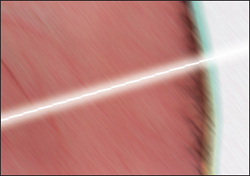
12 Laser Therapy
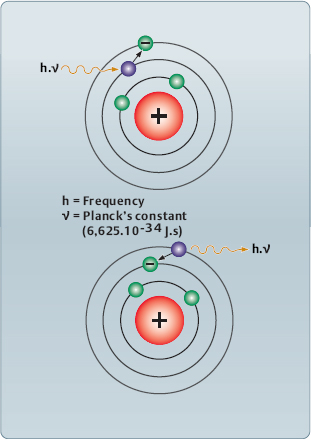
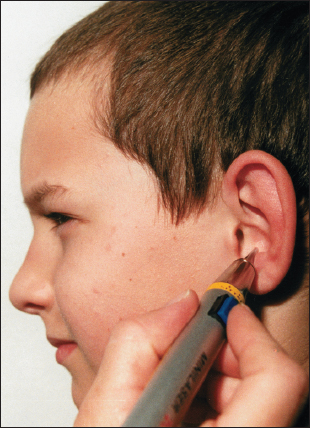


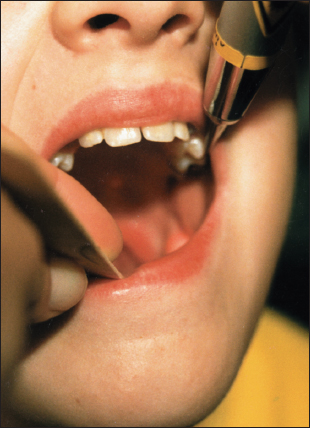
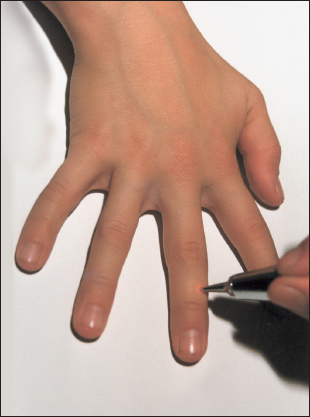
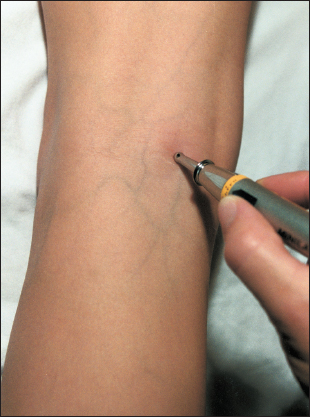
Stay updated, free articles. Join our Telegram channel

Full access? Get Clinical Tree


